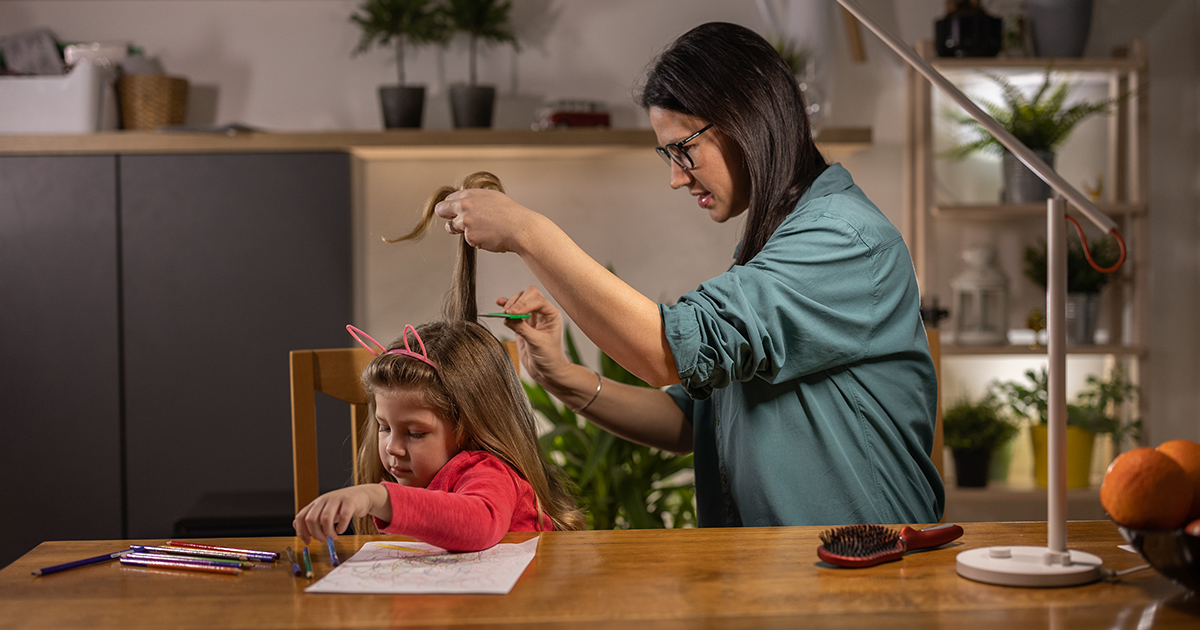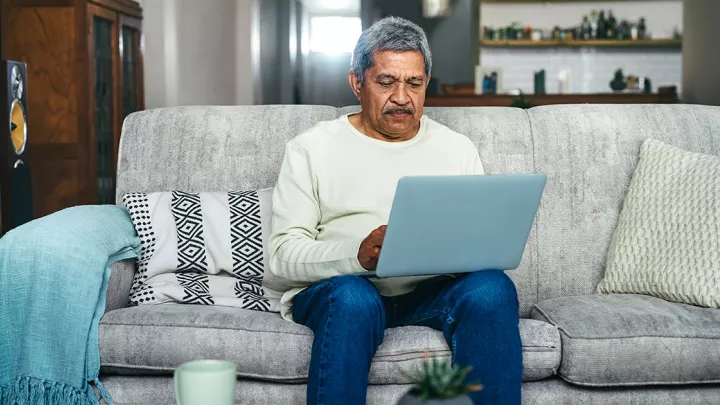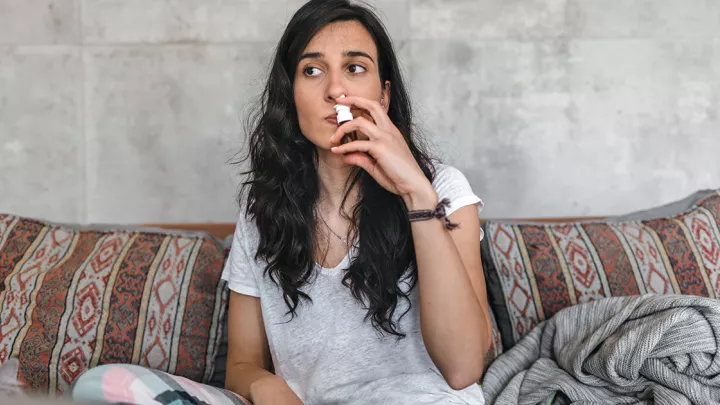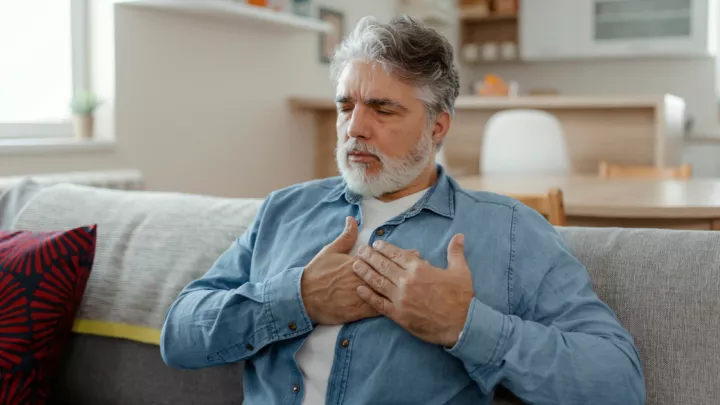Head lice: What they look like and how to treat them

If your child is scratching their head, neck and ears, they may have head lice. While lice aren't harmful, they can be a time consuming – and often embarrassing – pest. Read on to learn how to check for, treat and prevent head lice.
"Head lice are very common. About 6 to 12 million kids are treated for head lice in the United States each year, and lice are especially prevalent among school-aged children, their families and caretakers," says Michael Turco, MD, Clarkson Family Medicine resident.
What are head lice, and how do they spread?
Head lice are tiny, wingless insects that live on hair and feed on human blood. Their bites can irritate the scalp and, in some cases, lead to infection from constant scratching. They spread mostly through direct head-to-head contact and less frequently by sharing personal items, such as:
- Hats and scarves
- Brushes and hair accessories
- Headphones
- Pillows and towels
"There's this misconception that lice infestation is a result of poor hygienic practices, but head lice are found on all sorts of hair – be it long or short, clean or dirty," says Dr. Turco. "However, lice can be more difficult to detect among people with long hair."
What are the signs and symptoms of head lice?
Common symptoms of head lice include:
- Itching –The most common sign of head lice is itching of the scalp, neck and ears due to irritation from lice bites.
- Appearance of lice or lice eggs on the scalp – Lice are often hard to detect because they're extremely small. Lice eggs, also called nits, stick to hair shafts and can also be difficult to see, but you may be able to spot them near the ears and hairline.
- Sores – Prolonged scratching can lead to small, red bumps on the scalp, neck and shoulders that may become infected.
How can I check my child for head lice?
The best way to check your child for head lice is by using a fine-tooth comb on wet hair. A magnifying glass and a bright light can also help. After applying a generous amount of conditioner, gently comb the hair out in small sections, looking for tiny specks on the comb. Be sure to comb the entire scalp twice. Adult lice and developing lice are generally grayish white to brown in color and range from the size of a pinhead to a sesame seed. Because they're so small, lice and nits can easily be mistaken for other things, like dandruff or residue from hair products. To spot the difference, gently pull on a speck. If it stays put on the hair, it's possible you have nits present. If it flakes off easily, it's likely something else.
"If you suspect head lice, it's a good idea to see a doctor to confirm," says Dr. Turco. "Just because you find nits doesn't necessarily mean there's an infestation – adult lice need to be present for an active infestation."
Do children need to stay home from school if they have lice?
In most cases, a child with head lice can stay at school until the end of the day, go home and get treatment, and then return to school the next day. While at school, they should avoid head-to-head contact with other students. If your child has long hair, you may also want to have them pull it back to keep it contained. If you have questions about when it's safe to return, check with your child's school about attendance guidelines.
How are head lice treated?
The two main ways to treat head lice are:
- Medication – Several over-the-counter and prescription shampoos, rinses and lotions are designed to kill head lice. Regardless of the type of medication, it's important to follow the directions carefully. Applying too much or too frequently can be harmful or irritating, but too little won't work. Additionally, some treatments are only safe for those 2 years or older.
- Removing by hand – Removing lice and nits by hand can be helpful if you don't want to use an insecticide or medication. To do this, use a fine-tooth comb on wet, conditioned hair every three to four days for three weeks. Wetting hair stops the lice from moving, and conditioner makes it easier to comb through the hair. Continue to comb until no lice are seen. This can take about 15 to 60 minutes, depending on hair length.
If the options above don't work and you want to explore other treatments, it's best to talk to your doctor first.
"Home remedies like petroleum jelly, mayonnaise and olive oil were traditionally used to suffocate head lice, but there's no evidence to show they really work," says Dr. Turco. "Tea tree oil is another home remedy that people often think of, but like most home remedies, there's not good evidence to support it. Plus, it can irritate young scalps, so we don't recommend it. Over-the-counter lice treatments or prescription medications are far more effective at killing live lice and getting rid of the eggs once an infestation has occurred."
How can I prevent head lice from spreading?
To get rid of head lice and prevent them from spreading:
- Check anyone in your family who had close contact with a person with head lice.
- Treat anyone with head lice promptly, so they don't spread it further.
- Soak personal items like hair accessories in hot water or throw them away and discourage your family from sharing them.
- Wash all bed linens, stuffed animals and clothing used by the affected individual during the two days prior to therapy in hot water, then put them in the dryer for at least 20 minutes.
- Dry clean items that can't be washed at home or put them in airtight bags for two weeks to kill any lice.
- Vacuum carpets and upholstered furniture in your home or car, and then throw away the vacuum cleaner bag.
Dealing with head lice can be frustrating. If you suspect that you or a family member has lice, it's a good idea to consult a doctor, either in person or through a telehealth visit. Our telehealth options connect you with a doctor who can explain how to comb for lice and select the appropriate treatment. If you try treating lice and find you still have an infestation, you may want to schedule an appointment in person.







